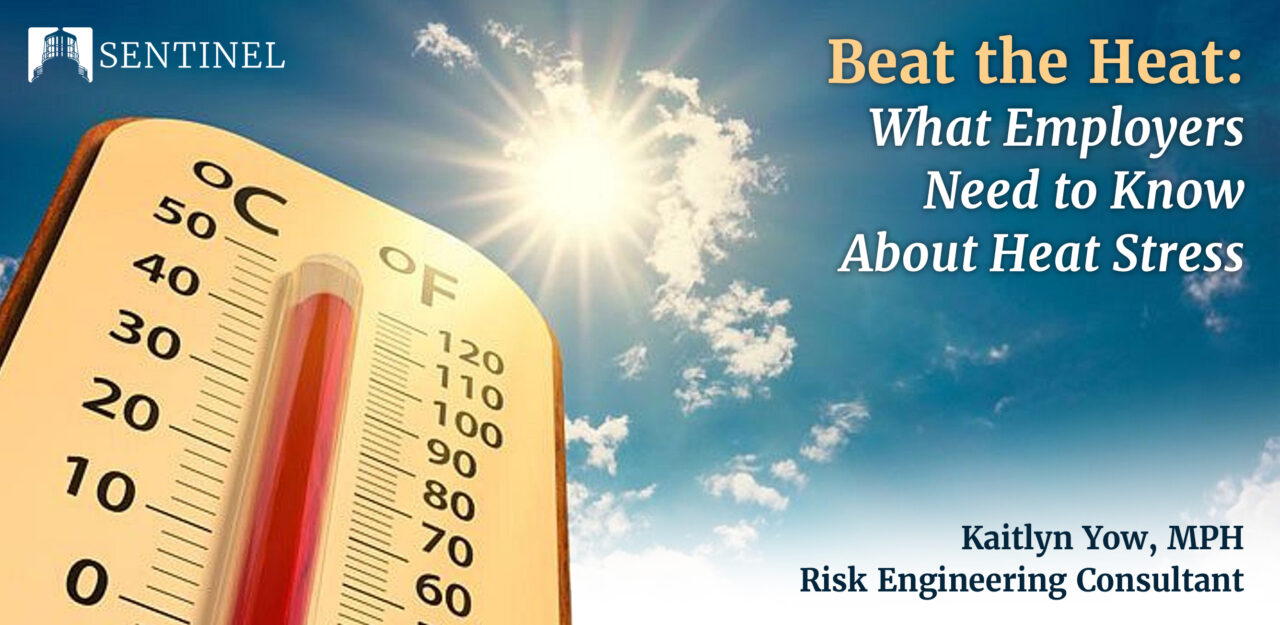As temperatures soar across the country and heat waves grow more intense each year, protecting workers from heat-related illness is no longer optional, but a critical safety, legal, and operational priority for businesses everywhere. No matter the industry, whether it be construction, logistics, agriculture, manufacturing, energy, or even indoor operations, heat-related illness is a growing risk that affects every employer.
From outdoor job sites to indoor warehouses, workers face real risks during periods of extreme heat. At the same time, Occupational Safety & Health Administration (OSHA) and several states are rolling out new, enforceable heat safety regulations that significantly raise the bar for employer responsibility. At Sentinel, we help organizations stay ahead by minimizing risk, ensuring compliance, and building resilient, heat-safe workplaces.
Why Heat Illness Should Be on Your Radar
Heat illness can escalate quickly, from mild symptoms like dizziness and cramps to life-threatening heatstroke. According to the Occupational Safety & Health Administration (OSHA), thousands of workers suffer from heat-related illnesses every year, and many cases are preventable. It’s crucial to know the warning signs early to quickly detect heat-related illness before it arrives:
Early signs of heat stress include:
Excessive sweating
Thirst and fatigue
Dizziness or confusion
Muscle cramps
Key Prevention Strategies for Employers
Creating a heat-safe workplace doesn’t require massive changes; it requires planning, training, and a proactive mindset. Core components of an effective program include:
Hydration: Adequate hydration is the most fundamental and effective safeguard against heat illness. Provide readily accessible, cool, potable water near all work areas and encourage employees to drink approximately 8 ounces every 15–20 minutes, even if they are not thirsty. For prolonged or strenuous tasks, consider supplying electrolyte beverages to support recovery.
Rest and Cooling: Implement regular shaded or air-conditioned breaks, especially in high-heat areas. Use fans, tents, or portable cooling stations, if possible. Implement and schedule work/rest based on temperature, humidity, workload, and clothing. Ensure workers take rest breaks in shaded, ventilated, or air-conditioned spaces. Whenever possible, use temporary cooling devices such as portable fans, cooling vests, misting systems, etc., when natural ventilation is insufficient.
Emergency Preparedness: Establish a written response plan for heat-related incidents. Ensure supervisors know when and how to call for emergency medical help, according to your company’s policy.
Training and Awareness: Education and training are critical to identifying and responding to heat-related symptoms early. At a minimum, all employees should be trained in recognizing symptoms of heat stress and heat stroke, proper hydration and rest practices, and emergency procedures and reporting expectations. Remember, employers must deliver training in languages understood by all employees and reinforce learning with visual aids, signage, and toolbox talks.
OSHA’s Current Requirements for Heat Illness Prevention
As of mid-2025, OSHA does not have a comprehensive, standalone federal heat illness standard yet, but heat illness prevention is still covered under existing regulations and OSHA guidance:
General Duty Clause (Section 5(a)(1) of the OSHA Act): Employers must provide a workplace “free from recognized hazards that are causing or are likely to cause death or serious physical harm.” Heat illness hazards are recognized risks, so employers are expected to take reasonable steps to protect workers from heat-related injuries and illnesses.
Applicable Standards in Some Circumstances: The Personal Protective Equipment (PPE) Standard may require cooling PPE or other controls when heat stress is a recognized hazard, the Hazard Communication Standard requires training and information sharing about heat hazards, and the Record-keeping Requirements may also apply if heat illness incidents occur.
State-Level OSHA Plans: Some states with OSHA-approved state plans (like California, Washington, Oregon) have their own enforceable heat illness regulations that may be more stringent than federal guidance. Employers in these states must comply with their state plan standards.
While there is currently no federal OSHA heat illness standard, employers are still legally obligated under the General Duty Clause to protect workers from heat hazards. OSHA strongly encourages implementation of comprehensive heat illness prevention programs based on their guidance. OSHA’s first-ever proposed federal heat standard is in the final stages and expected to be implemented late 2025 or early 2026. This rule will introduce explicit requirements for water, shade, rest breaks, training, monitoring, and written heat illness prevention plans.
Take Action Now to Protect Your Workforce
Sentinel offers access to industry experts to help organizations grasp key concepts surrounding risk, safety, and compliance. We offer an array of services, including onsite assessments, written and safety programs, training, and more, to suit your company’s specific risk engineering solutions. Contact Sentinel today to learn more about safeguarding your success.


